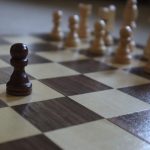Download links
How to install Mastering Parkour: Unleashing Your Inner Athlete with botb63 APK?
1. Tap the downloaded Mastering Parkour: Unleashing Your Inner Athlete with botb63 APK file.
2. Touch install.
3. Follow the steps on the screen.
Description
Parkour, often described as the art of movement, has its roots in the military obstacle course training of the early 20th century. The discipline was significantly influenced by the French military officer Georges Hébert, who developed a training method known as “méthode naturelle” in the 1900s. Hébert emphasized the importance of natural movement, advocating for physical training that included running, climbing, and jumping, all aimed at preparing individuals for real-world challenges.
His philosophy was that physical fitness should be practical and applicable to everyday life, a notion that would later resonate deeply within the parkour community. The modern incarnation of parkour began to take shape in the late 1980s and early 1990s in France, particularly in the suburbs of Paris. A group of young practitioners known as the Yamakasi, led by David Belle, began to explore urban environments as their playgrounds.
They utilized their bodies to navigate through obstacles such as walls, railings, and rooftops, transforming the urban landscape into a dynamic training ground. This movement was not merely about physical prowess; it was also a form of self-expression and a way to reclaim public spaces. The Yamakasi’s philosophy emphasized freedom, creativity, and efficiency in movement, which became foundational principles of parkour.
As parkour gained popularity, it transcended its French origins and spread globally, particularly through the influence of media. The release of films like “Yamakasi: Les samouraïs des temps modernes” in 2001 showcased the discipline’s breathtaking moves and philosophy, capturing the imagination of audiences worldwide. The rise of social media platforms further propelled parkour into the mainstream, allowing practitioners to share their skills and connect with others across the globe.
Today, parkour is recognized not only as a sport but also as a lifestyle that encourages individuals to challenge their physical limits while fostering a sense of community.
Key Takeaways
- Parkour originated in France in the 1980s as a training discipline using military obstacle course skills.
- Essential parkour techniques include building strength, agility, and mastering movements like the precision jump and wall run.
- Overcoming fear is crucial for parkour, and mental preparation through visualization and positive self-talk can help.
- Safety is paramount in parkour to avoid common injuries such as sprains, fractures, and concussions.
- Taking parkour to the next level involves mastering advanced moves like the cat leap and challenges like speed runs and obstacle courses. Finding a parkour community can provide training support and connection with others who share the passion for the discipline.
Essential Parkour Techniques: Building Strength and Agility
The Roll: A Foundational Movement
One of the most crucial movements in parkour is the “roll,” which is essential for safely landing from jumps and falls. The roll allows practitioners to dissipate the impact force across their body, reducing the risk of injury. Learning to execute a proper roll involves tucking the shoulder and rolling diagonally across the back, which can be practiced on soft surfaces before transitioning to harder ground.
Vaulting: Clearing Obstacles with Ease
Another fundamental technique in parkour is the “vault,” which enables practitioners to clear obstacles such as railings or walls with fluidity and speed. There are various types of vaults, including the speed vault, lazy vault, and kong vault, each serving different purposes depending on the height and type of obstacle. Practicing these vaults not only builds upper body strength but also enhances coordination and spatial awareness.
Building Strength and Precision
In addition to rolls and vaults, developing strength through exercises like precision jumps is vital for parkour practitioners. Precision jumps require individuals to leap from one point to another with accuracy, often landing on narrow surfaces such as ledges or rails. This technique demands not only explosive leg strength but also balance and control. Training for precision jumps can involve using various heights and distances to gradually increase difficulty while focusing on landing softly and maintaining composure upon impact.
Overcoming Fear: Mental Preparation for Parkour

Fear is an inherent part of engaging in parkour, especially when faced with daunting heights or challenging obstacles. Overcoming this fear is crucial for any practitioner looking to progress in their skills. Mental preparation begins with understanding that fear is a natural response; it serves as a protective mechanism that can be harnessed rather than suppressed.
One effective strategy for managing fear is visualization. Practitioners can mentally rehearse their movements before attempting them physically, creating a mental blueprint that can help reduce anxiety when faced with real-life challenges. Another important aspect of mental preparation is setting incremental goals.
Instead of attempting a complex move right away, breaking it down into smaller, manageable steps can build confidence over time. For example, if a practitioner wishes to conquer a high wall jump, they might start by practicing lower jumps or working on their technique on flat ground before gradually increasing height. This step-by-step approach allows individuals to celebrate small victories along the way, reinforcing their belief in their abilities.
Additionally, fostering a supportive training environment can significantly impact one’s ability to overcome fear. Training with others who share similar goals creates a sense of camaraderie and encouragement. Practitioners can motivate each other to push past their limits while providing constructive feedback.
This communal aspect not only helps in overcoming individual fears but also cultivates a culture of safety and support within the parkour community.
Safety First: Avoiding Common Parkour Injuries
| Injury Type | Percentage of Injuries |
|---|---|
| Ankle Sprains | 35% |
| Wrist Injuries | 20% |
| Knee Injuries | 15% |
| Shoulder Dislocations | 10% |
| Head Injuries | 5% |
While parkour is an exhilarating discipline that promotes physical fitness and creativity, it is not without its risks. Injuries can occur if practitioners do not prioritize safety during training sessions. One common injury in parkour is ankle sprains, often resulting from improper landing techniques or misjudging distances during jumps.
To mitigate this risk, practitioners should focus on developing strong ankles through specific exercises such as calf raises and balance drills. Additionally, practicing landings on softer surfaces like grass or mats can help reduce impact while honing technique. Another prevalent injury is related to falls from heights, which can lead to more severe consequences such as fractures or concussions.
This includes checking for obstacles below and ensuring that landing zones are clear and safe. Furthermore, using protective gear like wrist guards or knee pads can provide an extra layer of safety during practice sessions.
Engaging in dynamic stretches and mobility exercises prepares the body for the physical demands of movement by increasing blood flow to muscles and enhancing flexibility. A well-structured warm-up can significantly reduce the likelihood of strains or pulls during intense training sessions.
Practitioners should also listen to their bodies; if fatigue sets in or pain arises, it’s crucial to take breaks and allow for recovery rather than pushing through discomfort.
Taking Parkour to the Next Level: Advanced Moves and Challenges
Once practitioners have mastered the foundational techniques of parkour, they often seek to elevate their skills through advanced moves and challenges that push their limits further. One such advanced technique is the “cat leap,” which involves jumping towards an obstacle while extending both arms forward to catch it with hands before landing on it. This move requires not only strength but also precise timing and spatial awareness to ensure a safe landing.
Another challenging aspect of parkour is incorporating flips into movements. The “backflip” and “front flip” are popular among advanced practitioners who wish to add flair to their routines. These acrobatic moves require significant strength and coordination; thus, they should be practiced under supervision or in controlled environments like gymnastics facilities where safety mats are available.
Mastering flips not only enhances a practitioner’s repertoire but also builds confidence in executing complex maneuvers. As practitioners progress in their skills, they may also seek out new challenges by participating in parkour competitions or events that test their abilities against others in timed courses or obstacle challenges. These events provide an opportunity for individuals to showcase their skills while fostering a sense of community among participants.
Engaging in competitions can also serve as motivation for continuous improvement as practitioners strive to refine their techniques and push beyond their previous limits.
Finding Your Parkour Community: Training and Connecting with Others

The journey of mastering parkour is often enriched by being part of a community that shares similar passions and goals. Finding a local parkour group or training facility can provide invaluable support for both beginners and experienced practitioners alike. Many cities have established parkour gyms that offer classes led by experienced coaches who can guide individuals through proper techniques while fostering a safe training environment.
In addition to formal training spaces, online platforms have become essential for connecting with fellow enthusiasts around the world. Social media groups dedicated to parkour allow practitioners to share tips, videos of their progress, and even organize meet-ups for group training sessions. These online communities create opportunities for collaboration and learning from others’ experiences while also providing inspiration through shared achievements.
Participating in workshops or events hosted by experienced practitioners can further enhance one’s skills while building connections within the community. These gatherings often feature skill-sharing sessions where participants can learn new techniques or receive feedback on their performance from seasoned athletes. Engaging with others who share a passion for parkour fosters camaraderie and encourages individuals to challenge themselves collectively while celebrating each other’s successes along the way.
In conclusion, parkour is more than just a physical discipline; it embodies a philosophy of movement that encourages creativity, resilience, and community engagement. By understanding its origins, mastering essential techniques, overcoming mental barriers, prioritizing safety, exploring advanced moves, and connecting with others in the community, practitioners can fully embrace this dynamic art form while continuously evolving in their journey through movement.
FAQs
What is parkour?
Parkour is a physical discipline that involves moving through an environment in a fluid and efficient manner, using only the human body and the surroundings to propel oneself.
What are the basic movements in parkour?
Basic movements in parkour include running, jumping, climbing, vaulting, and balancing. These movements are used to navigate obstacles and terrain in an urban or natural environment.
Is parkour dangerous?
Parkour can be dangerous if not practiced with proper training and caution. It involves high-risk movements and requires a strong understanding of one’s physical capabilities and limitations.
What are the benefits of practicing parkour?
Practicing parkour can improve strength, agility, coordination, and mental focus. It also promotes creativity and problem-solving skills as practitioners navigate obstacles and challenges in their environment.
Is parkour only for young and fit individuals?
Parkour can be practiced by individuals of all ages and fitness levels. It can be adapted to suit different abilities and can be a fun and effective way to stay active and healthy.





